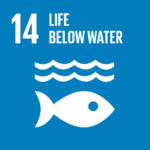The United Nations’ Convention on the Conservation of Migratory Species of Wild Animals (CMS) has released a comprehensive report highlighting potential solutions to human-induced ocean noise pollution.
A significant new report published by the United Nations’ Convention on the Conservation of Migratory Species of Wild Animals (CMS) underscores potential remedies for human-induced ocean noise, a critical form of pollution impinging upon marine life from microscopic plankton to gargantuan whales.
RELEVANT SUSTAINABLE GOALS

The Conservation of Migratory Species of Wild Animals (CMS)
The comprehensive report, released in June, addresses three pivotal sources of anthropogenic noise polluting our oceans: shipping, seismic air gun surveys, and pile driving. While there are established agreements advocating the use of the “best available technologies” and “best environmental practices,” these often lack specificity. This new UN report fills this void, suggesting effective techniques and technologies to mitigate underwater noise.
Lindy Weilgart, the report’s author and a distinguished underwater noise specialist, stresses the urgency of shifting from studying impacts to implementing solutions. “We already know the impacts are serious…it would be so much more bang for your buck if you just quieted the noise,” Weilgart stated, advocating for more tangible actions.
According to the report, shipping noise, often attributed to poor hull or propeller design, has devastating impacts, raising stress levels in North Atlantic right whales and disorienting migrating schools of bluefin tuna, among others. The remedy? Better boat design, efficient cleaning, real-time noise monitoring, and simply slowing down ships. Weilgart underscores, “Just a modest 10% reduction in speed can decrease the noise footprint by 40%.“
Seismic air gun surveying, commonly used by the oil and gas industry, disrupts marine life, displacing fin whales and exterminating zooplankton. Weilgart suggests replacing traditional air guns with marine vibrator systems for a “longer, quieter signal.” She also underscores the importance of avoiding air gun surveys in “sensitive and important habitats” and creating acoustic refuges around marine protected areas.
Pile driving, the act of hammering foundational structures into the seabed, is another significant contributor to ocean noise pollution. It disrupts the behavior of various marine species, including harbor porpoises, blue mussels, cod, and sole. The report proposes alternatives such as BLUE piling and emphasizes the importance of restrictions on underwater piling noise.
Michael Stocker, a marine bioacoustician and executive director of Ocean Conservation Research, while lauding Weilgart’s report, questioned the likelihood of these recommendations being followed, given the potential associated costs, effort, and a lack of enforcement. He also pointed out that the noise impacts of increasing offshore wind farms have not been fully considered in the report.
This report shines a light on the crucial yet often overlooked issue of ocean noise pollution, and its wide-reaching impact on marine biodiversity. Addressing these challenges requires a concerted global effort, emphasizing not only the study of impacts but the deployment of effective mitigation strategies. As we work to harmonize our activities with the natural world, it is essential that we let the oceans’ symphony play on – minus the cacophony of human-made noise.
You may also be interested in :
A Win For Blue : UN States Agree On Protecting High Seas After 15 Years Of Discussion



